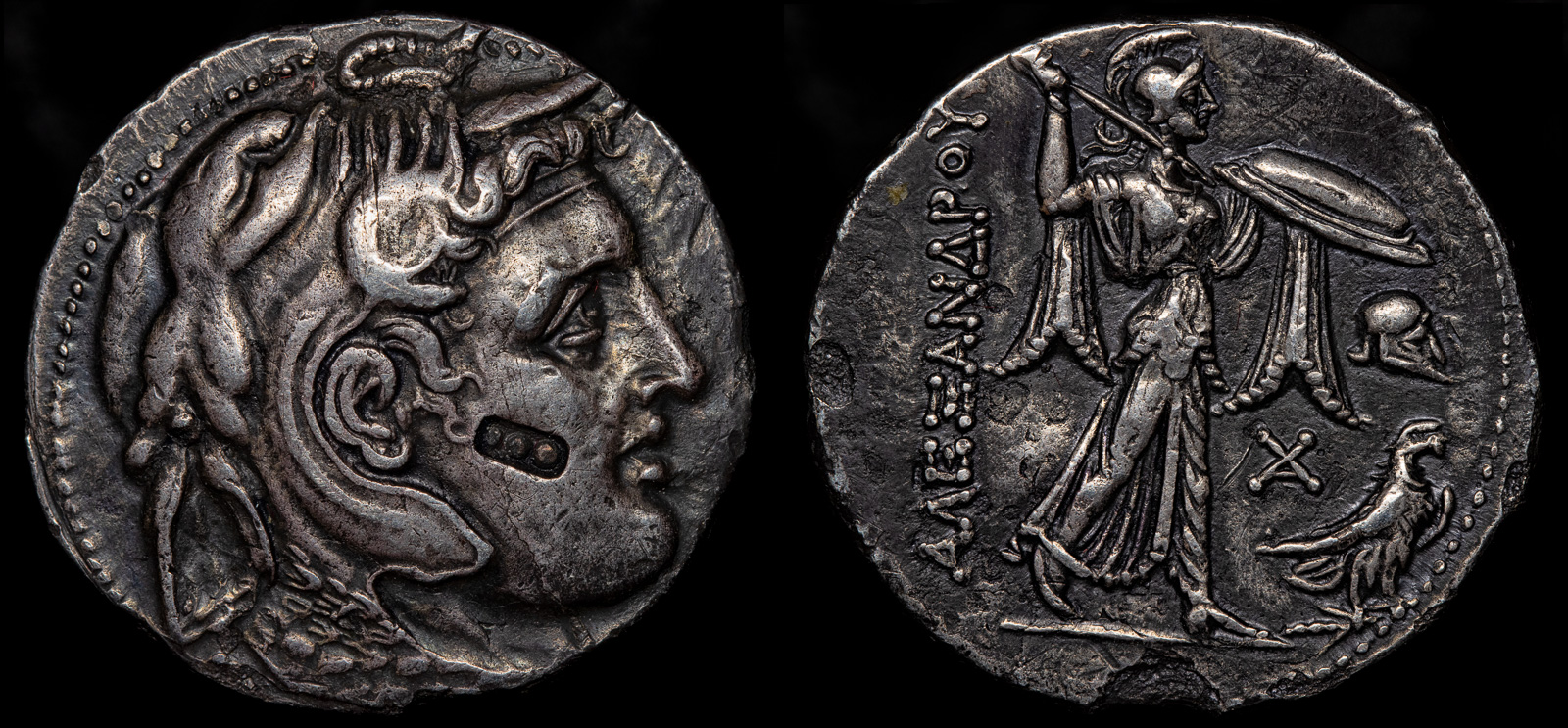
Ptolemy I
311-305 BCE
Alexandria
27.5 mm 14.6g 1h
Avers : Buste cornu et diadémé d’Alexandre le Grand sous les traits de Zeus-Ammon à droite, coiffé de la dépouille d’éléphant avec l’égide.
Revers : Athéna Promachos ou Alkidemos marchant à droite, brandissant une javeline de la main droite et tenant un bouclier de la gauche ; dans le champ à gauche, un casque corinthien, un monogramme et un aigle sur un foudre tourné à droite.
Sv.162 (37 ex) – Cop.29 – GC.7750 var. – BMC.- – MP.6
Ex Robert J. Myers Auction 12, lot 291 (December 4, 1975)
The Lagid (named for Ptolemy I’s father) kingdom started with Ptolemy I, who realized the advantage of a kingdom in Egypt – mainly that it was easy to defend.
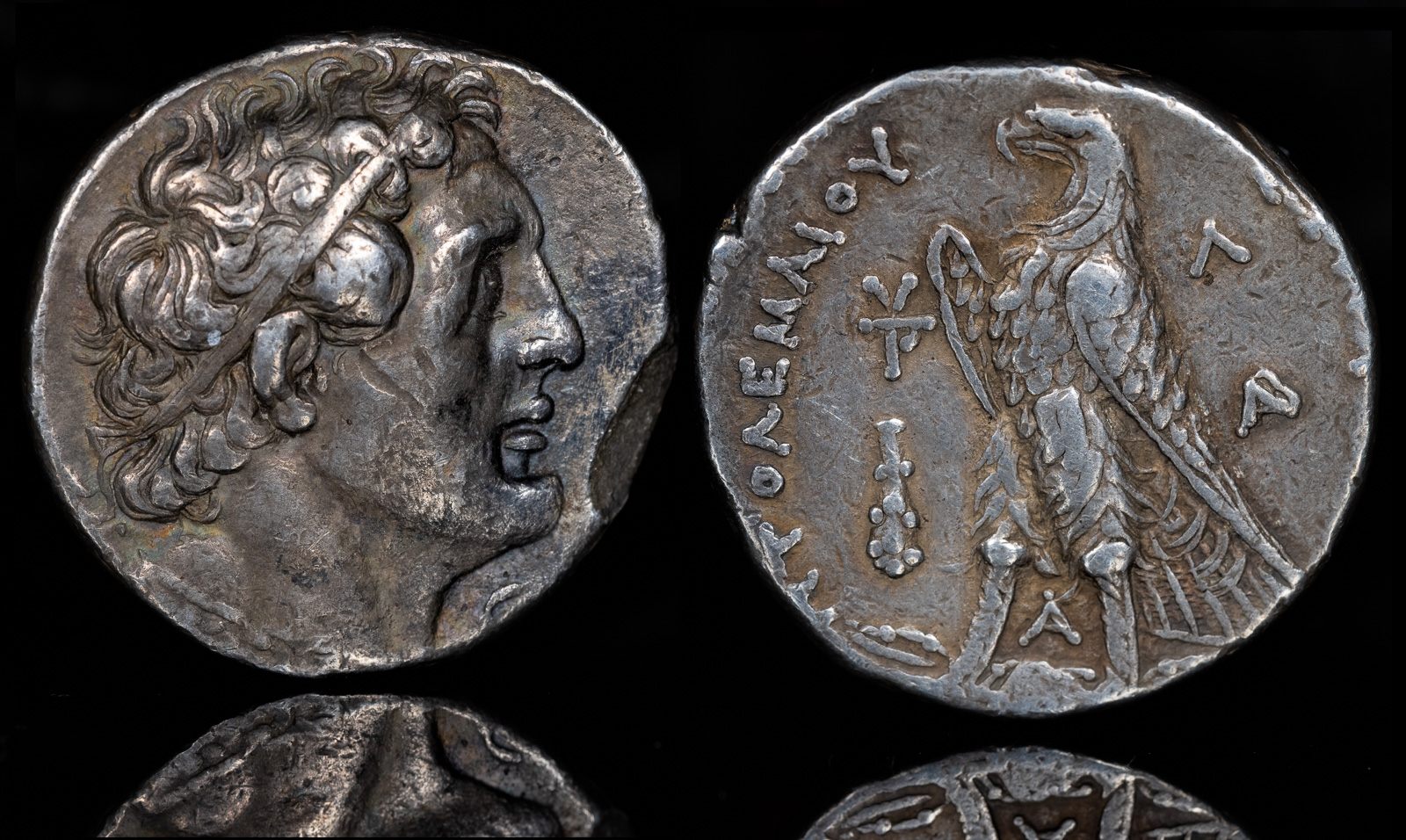
Ptolemaic Kingdom of Egypt, Ptolemy II Philadelphos
AR Tetradrachm. Tyre, dated RY 30 = 256/5 BCE
14.01g, 25mm, 12h.
Diademed head of Ptolemy I to right, wearing aegis around neck / ΠΤΟΛEΜΑΙOΥ [BAΣΙΛEΩΣ], eagle standing to left; monogram of Tyre above club to left; Λ (date) above monogram to right; A between legs.
CPE 577; Svoronos 657; SNG Copenhagen 488; DCA 20
Ex collection of R. N. Draskowski;
Ex Ephesus Numismatics, North Carolina, USA
His son, Ptolemy II, is credited with finishing the Pharos (lighthouse) of Alexandria and the Library at Alexandria. He was also the first Ptolemy to marry his sister.

Ptolemaic Kings of Egypt. Ptolemy III Euergetes
AE Trihemiobol
246-222 BCE
29.18mm 16.90g
Obverse: Diademed Head of Zeus Ammon right
Reverse: Basileus Ptolemaios, statue of Aphrodite standing facing on base
CPE B447; Svoronos 1005; SNG Copenhagen 644 Paphos mint
Ex Herb Klug
Ex Marc Breitsprecher
Ptolemy III nearly defeated the Seleukid empire, but was forced to turn back due to an uprising in his own Egypt.
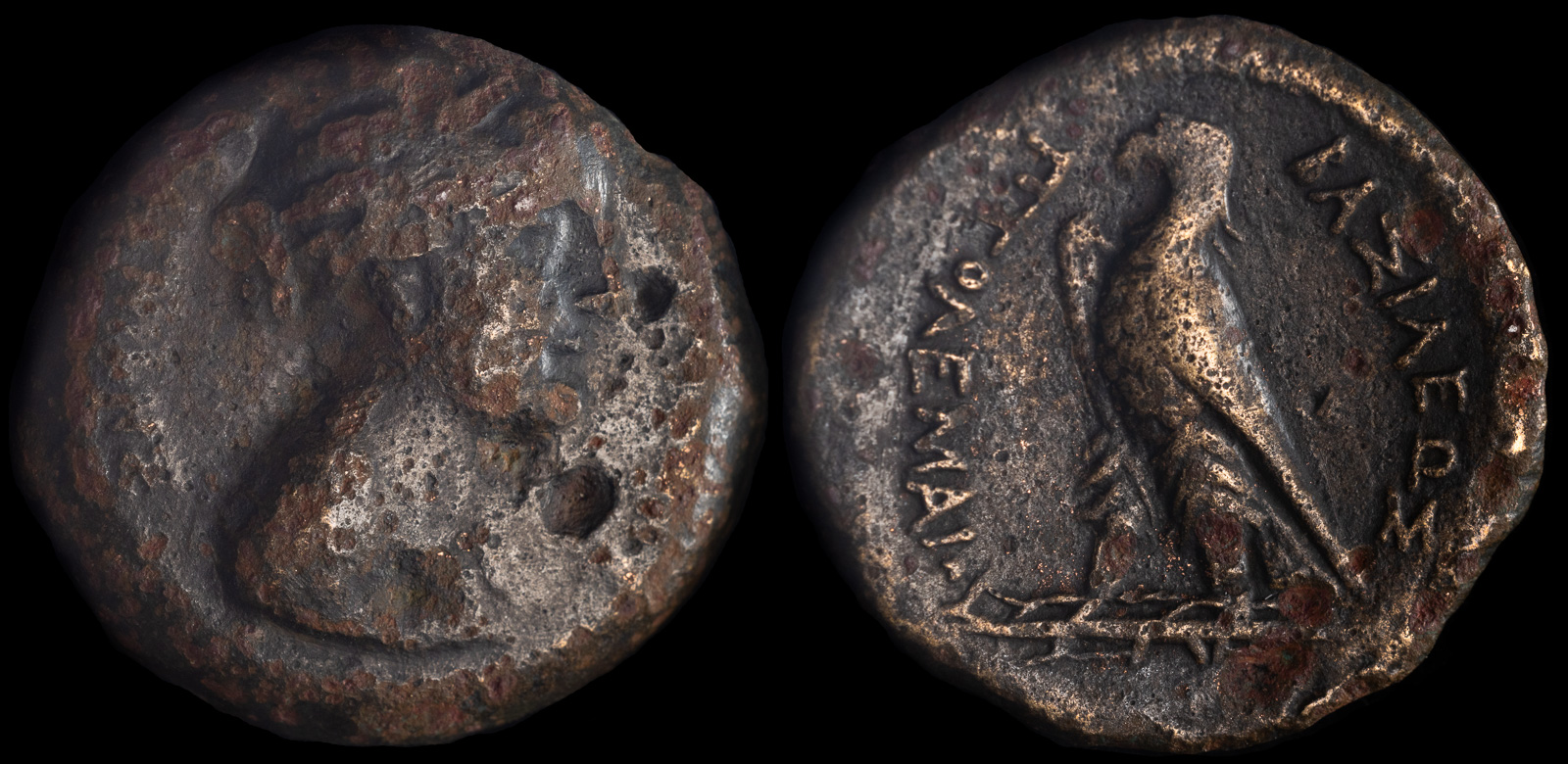
Ptolemaic Kingdom of Egypt. Berenike II, wife of Ptolemy III
Mint of Heraklea by the Sea or Seleukeia in Pieria
Struck circa 244-241 BCE
Tritartemorion Æ 21mm, 6,74g
Diademed and draped bust right of Berenike II /
Eagle with closed wings standing left on thunderbolt.
CPE B460; Svoronos 1055; SNG Copenhagen 460
Berenike II was the wife of Ptolemy III. She killed her first husband when she found out he was cheating on her.
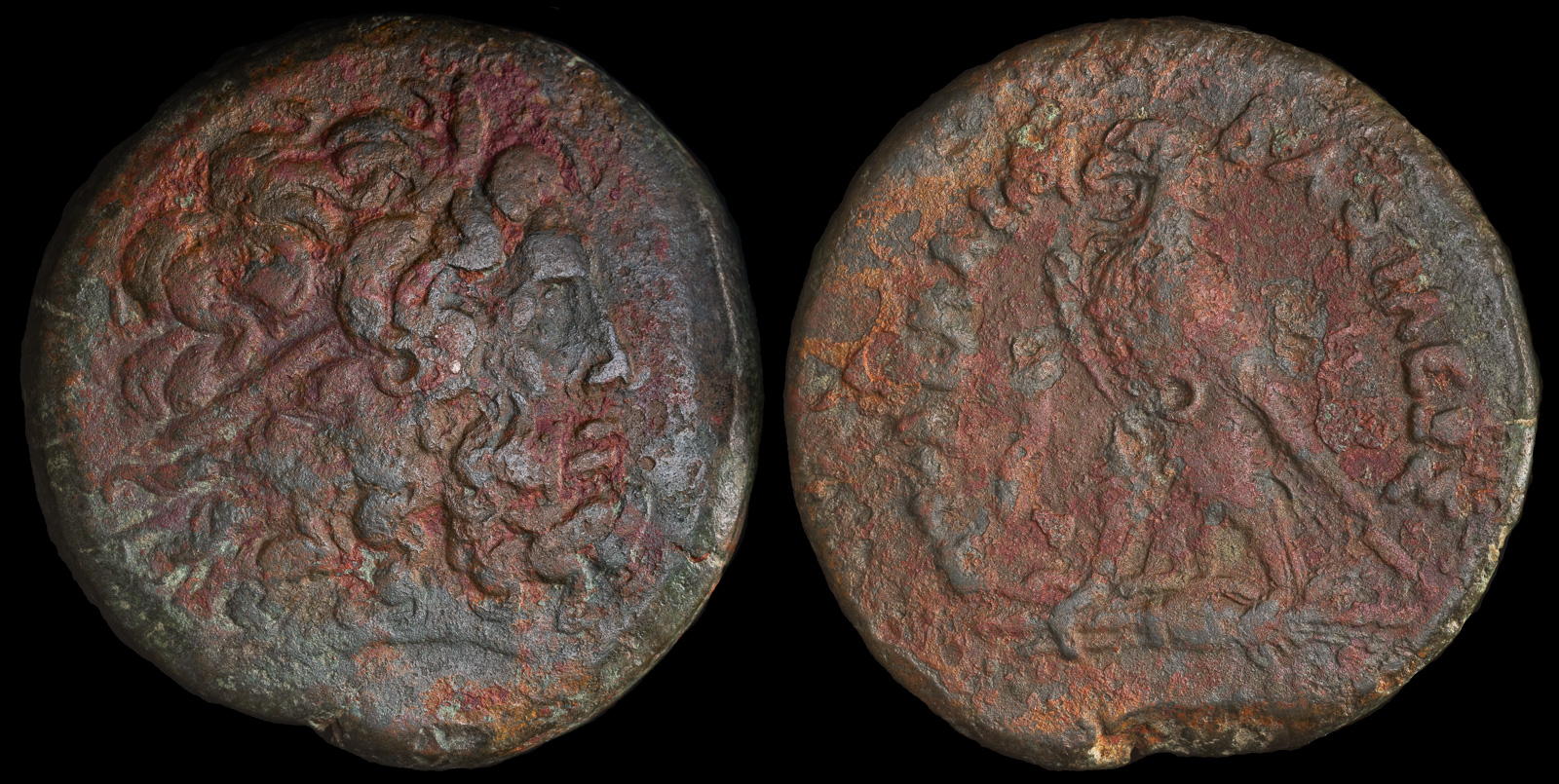
Ptolemy IV Philopator
222-205/4 BCE
AE Drachm 41.4mm 66.2g
Alexandreia Mint
Obv: Head of Zeus-Ammon right, wearing tainia
Rev: Eagle standing left on thunderbolt, filleted cornucopia to left; LI between legs
Ref: Svoronos 1126
Ptolemy IV was the beginning of the lazy kings of Egypt and started its downfall.
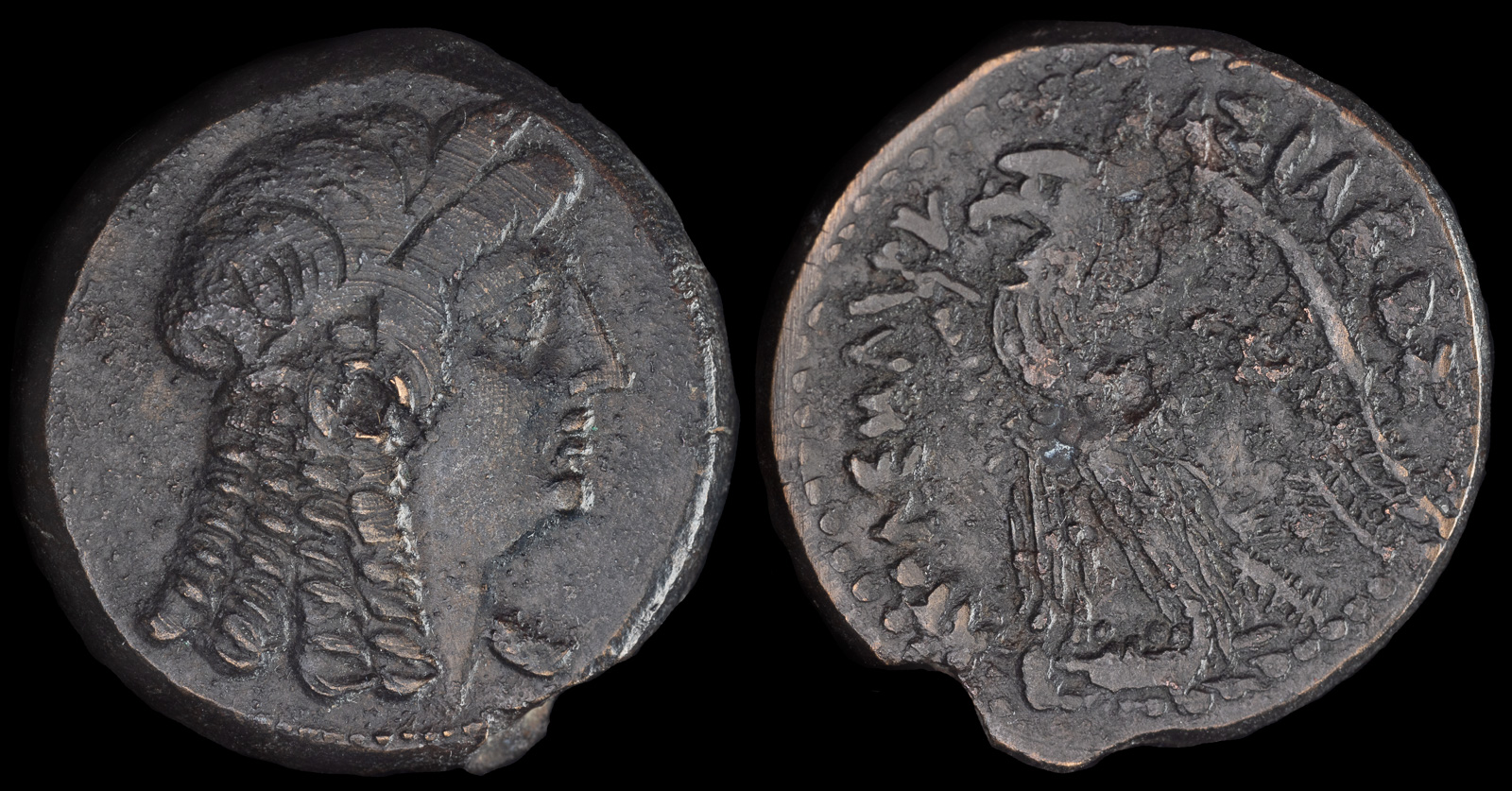
Ptolemaic Kings of Egypt, Ptolemy V Epiphanes
205-180 BCE
Æ Hemidrachm 27.08mm 17.92g
Obverse: Diademed head of Isis right
Reverse: ΠTOΛEMAIOY BAΣIΛEΩΣ, eagle with spread wings standing left on thunderbolt
Svoronos 1234; SNG Copenhagen 247
Ex CNG Auction 1996
Ptolemy V was only five years old when his parents were murdered under suspicious circumstances.
Ptolemy I declares himself Pharaoh and moves his capital to Alexandria, thus beginning the Ptolemaic Kingdom.
Agathokles formally adopts the title of King of Sicily, consolidating his rule and securing recognition from other Hellenistic rulers. He strengthens his alliances, including with Ptolemaic Egypt and other Greek states.
Amathos, Soloi, and Salamis become part of the Ptolemaic Kingdom of Egypt under Ptolemy I Soter. They are incorporated into the Ptolemaic administrative system, as Cyprus becomes a strategic naval and commercial hub for the Ptolemies.
May
Death of Ptolemy I Soter. Ptolemy II Philadelphos becomes the sole king of Egypt.
Berenike II marries Ptolemy III, bringing control of Kyrene back to the Ptolemies.
Seleukeia Piera is captured by Ptolemy III Euergetes.
January 28
Death of Ptolemy II Philadelphos. Ptolemy III becomes king.
Death of Ptolemy III. Ptolemy IV becomes King of Egypt.
July
Ptolemy IV dies, maybe from a fire at the palace. Ptolemy V becomes King of Egypt.
September
Ptolemy V is believed to have been poisoned by his courtiers. Ptolemy VI becomes King of Egypt.
Ptolemy VI and Kleopatra II are expelled from the Egyptian throne by Ptolemy VIII.
The people of Egypt riot against Ptolemy VIII and reinstate Ptolemy VI.
Ptolemy VI dies from wounds in battle in Syria. Ptolemy VIII is invited to take the throne of Egypt.
August
Alexander Balas is defeated by Ptolemy VI and Demetrios II, who becomes the Seleukid king.
June 28
Death of Ptolemy VIII. He is succeeded in Egypt by Ptolemy IX.
August 5
Berenike III is promoted by Ptolemy IX to co-regent of Egypt.
December
Death of Ptolemy IX. Berenike III rules Egypt alone.
Berenike III installs Ptolemy XI as co-regent of Egypt. He then murders Berenike III and is subsequently lynched in Alexandria. Ptolemy XII becomes king.
Ptolemy XII is forced to exile in Rome. Berenike IV and Kleopatra VI rule Egypt.
King Ptolemy XII Auletes retires to Ephesos when the Roman Senate refuses to reinstate him to the throne.
Ptolemy XII is restored to the throne of Egypt.
May 31
Kleopatra VII, the daughter of Ptolemy XII, is installed by him as co-regent of Egypt.
March 22
Latest date for the death of Ptolemy XII of Egypt. Kleopatra VII now rules alone.
November
Julius Caesar starts an affair with Kleopatra.
December
Julius Caesar and Kleopatra are besieged in Alexandria by Ptolemy XIII and Arsinoe IV.
June 23
Birth of son Caesarion to Kleopatra and Julius Caesar.
Marc Antony seizes 200,000 scrolls from the Library at Pergamon and gifts them to Kleopatra for the Library at Alexandria.
Kleopatra and Marc Antony meet and have lavish feasts at Tarsos.
Artavasdes II is decapitated by Kleopatra VII after he refuses to bow to her.
Malichos I has a bitter rivalry with Kleopatra VII, resulting in his failing to show up for the Battle of Actium, a victory for Octavian.
Octavian (later Augustus) enters Alexandria and annexes Egypt into the Roman Empire. Cleopatra VII commits suicide, ending the Ptolemaic Dynasty.
August 10
Antony and Cleopatra commit suicide. Octavian conquers Egypt, making it a Roman province.